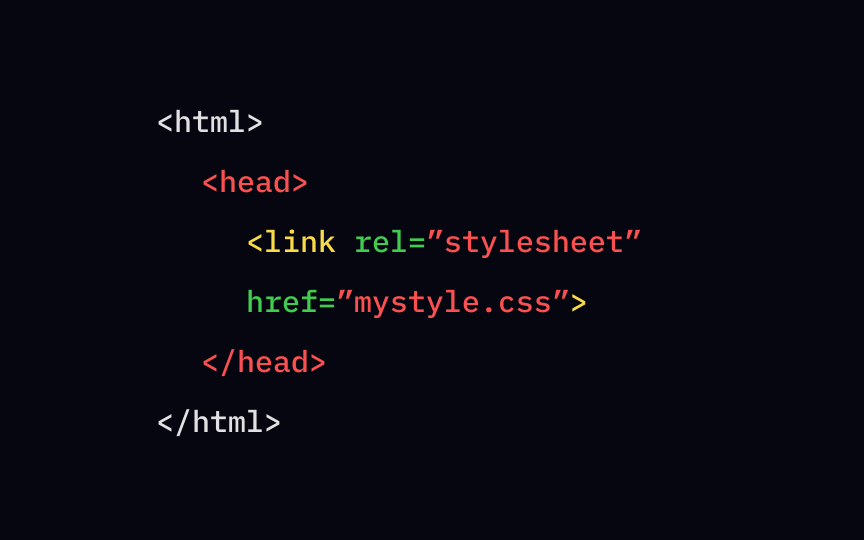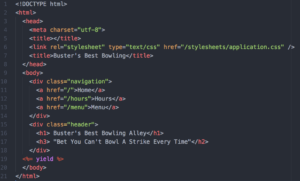
Efficient Web Styling: Embracing External CSS
The utilization of Cascading Style Sheets (CSS) serves as a cornerstone for achieving visually appealing and user-friendly websites. Among the various approaches to implementing CSS, leveraging external style sheets stands out for its versatility, efficiency, and scalability. This article delves into the myriad benefits and practical applications of external CSS, exploring how it empowers designers to streamline their workflows, enhance user experiences, and maintain cohesive design standards across multiple web pages.
Is Efficiency and Consistency External CSS Enhanced?
Efficiency and consistency can be enhanced through the use of external CSS (Cascading Style Sheets) in web development. Here’s how:
Efficiency:
- File Size Reduction: External CSS allows you to define styles in a separate file, which can be cached by the browser. This means that once the styles are downloaded, subsequent page loads can use the cached file, reducing the amount of data that needs to be transmitted;
- Code Reusability: External CSS promotes code reusability by allowing you to link the same stylesheet to multiple HTML pages. This reduces redundancy and makes maintenance easier because changes made in one place will reflect across all linked pages;
- Faster Page Rendering: By separating content (HTML) from presentation (CSS), external CSS enables browsers to render pages faster. Browsers can start rendering the page without having to wait for the CSS to load, resulting in quicker perceived load times.
Consistency:
- Centralized Styling: External CSS allows you to centralize styling rules in one location, making it easier to maintain a consistent look and feel across an entire website. Any changes made to the stylesheet will be applied uniformly to all pages linked to it;
- Avoid Inline Styles: External CSS discourages the use of inline styles, which can lead to inconsistent styling practices and make it harder to maintain a consistent design across a website;
- Modular Approach: By organizing stylesheets into separate files (e.g., one for layout, one for typography, one for colors), you can adopt a modular approach to styling, which promotes consistency and scalability.
In summary, by using external CSS, you can improve efficiency by reducing file size, promoting code reusability, and accelerating page rendering. Additionally, you can enhance consistency by centralizing styling rules, avoiding inline styles, and adopting a modular approach to styling.
How Does External CSS Optimize Performance and Accessibility?
External CSS can optimize performance and accessibility in several ways:
Performance Optimization:
- Caching: External CSS files can be cached by the browser after the initial download. Subsequent page loads can then utilize the cached CSS file, reducing the amount of data that needs to be downloaded and improving load times;
- Parallel Downloads: Browsers can download external CSS files in parallel with other page resources like HTML, images, and scripts. This parallel downloading capability can lead to faster overall page loading times;
- Minification and Compression: External CSS files can be minified (removing unnecessary whitespace and comments) and compressed (using techniques like gzip compression) to reduce file size. Smaller file sizes result in faster downloads and improved performance;
- Reduced Render-Blocking: By separating CSS into an external file, you can prevent render-blocking, where CSS resources must be loaded before the page can render. Browsers can start rendering the HTML content while asynchronously fetching and applying the external CSS, leading to faster perceived load times.
Accessibility Optimization:
- Separation of Concerns: External CSS encourages a separation of concerns between content (HTML) and presentation (CSS). This separation makes it easier to maintain and update styles without affecting the underlying content, improving accessibility for users who rely on assistive technologies;
- Semantic HTML with ARIA: External CSS works well with semantic HTML and ARIA (Accessible Rich Internet Applications) attributes. Developers can use CSS to style HTML elements in a way that enhances accessibility, such as providing visual cues for interactive elements or ensuring proper contrast ratios for text readability;
- Responsive Design: External CSS facilitates the implementation of responsive design techniques, allowing websites to adapt their layout and styling based on the user’s device and screen size. Responsive design enhances accessibility by ensuring that content remains usable and readable across a wide range of devices, including smartphones, tablets, and desktop computers;
- Focus Styles and Keyboard Navigation: CSS can be used to style focus states and improve keyboard navigation for users who rely on keyboards or assistive technologies to navigate websites. External CSS enables consistent styling of focus indicators, ensuring that interactive elements remain accessible and usable.
In summary, external CSS optimizes performance by enabling caching, parallel downloads, minification, compression, and reducing render-blocking. It also enhances accessibility by promoting separation of concerns, supporting semantic HTML and ARIA attributes, facilitating responsive design, and improving focus styles and keyboard navigation.
How Can External CSS Streamline Maintenance and Collaboration?
External CSS can streamline maintenance and collaboration in web development in several ways:
- Centralized Styling: External CSS allows you to define styling rules in a separate stylesheet that can be linked to multiple HTML pages. This centralization of styling ensures consistency across the entire website. When a change is needed, you only have to update the external CSS file, and the changes will be applied uniformly to all linked pages. This reduces redundancy and minimizes the risk of inconsistencies;
- Code Reusability: By externalizing CSS, you can reuse styling rules across different pages or even different projects. This promotes code reusability and saves time, as you don’t need to redefine styles for common elements repeatedly. Additionally, when collaborating with others, external CSS files provide a shared resource that all team members can reference and contribute to, fostering collaboration and consistency in styling;
- Modular Approach: External CSS encourages a modular approach to styling by organizing stylesheets into separate files based on different aspects of design (e.g., layout, typography, colors). This modular structure makes it easier to manage and maintain styles, as changes can be isolated to specific files without affecting unrelated styles. It also allows for better organization and understanding of the codebase, which can streamline collaboration among team members;
- Version Control: External CSS files can be managed using version control systems (e.g., Git), allowing changes to be tracked, reviewed, and reverted if necessary. Version control enhances collaboration by providing a centralized repository where team members can work on the stylesheet concurrently, track changes, and resolve conflicts. It also ensures that the styling history is well-documented, which is helpful for troubleshooting and auditing purposes;
- Task Automation: External CSS files can be integrated into build processes and task runners (e.g., Gulp, Webpack) for automating repetitive tasks such as minification, prefixing, and optimizing stylesheets. Task automation streamlines the development workflow, improves efficiency, and reduces the likelihood of errors. It also promotes consistency by enforcing coding standards and best practices across the project.
Overall, external CSS streamlines maintenance and collaboration by centralizing styling, promoting code reusability, encouraging a modular approach, facilitating version control, and enabling task automation. These practices help teams work more efficiently, maintain consistency, and collaborate effectively on web development projects.
Conclusion
External CSS emerges as a powerful tool for mastering the art of web design, offering unparalleled flexibility, efficiency, and maintainability. By harnessing the potential of external style sheets, designers can elevate their projects to new heights, delivering immersive and engaging experiences for users worldwide. As the digital landscape continues to evolve, the principles of external CSS remain timeless, serving as a guiding light for those who seek to craft compelling and accessible websites for the modern era.

